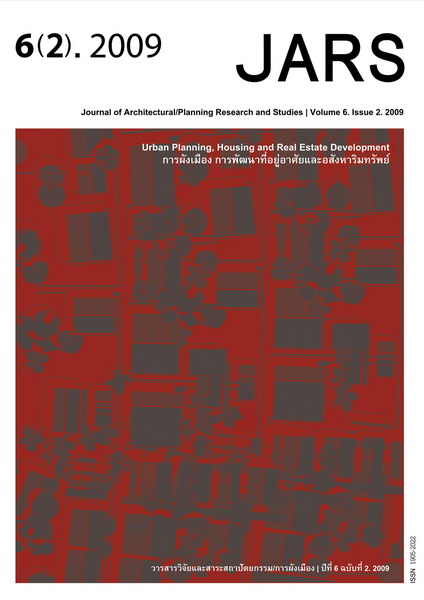The Unresisting Allure of the Cloned Places
Main Article Content
Abstract
Contemporary urbanization poses difficult situations for architectural researchers. On the one hand,
changes due to increasing “regionalization” of cities impart distinct meanings to the very concept of city. On the
other hand, new iconic projects signal to remarkable changes in townscapes. Newly invented places offer
innovative spaces for people’s conviviality and information interchange—an urban quality known as urbanity.
However, such manifestations may fragment the urbanized territory, creating compartments that act as disintegrative
forces. A question invades the architectural milieu: are such changes beneficial, or the source of severe distortions?
The paper recalls the concept of place and the progresses that led to its actual transdisciplinar perspective.
In their move from internationalism to globalism, the urban landscapes of globalization experience crucial
changes, often manifested through an insertion of prettified images of places that “clone” selected spatial
features perceived as attractive. Created predominantly by market forces, they act as tools to attract people to
an exciting array of spaces, contributing to the competitive use of urbanity. Their production and diffusion are
identified in the literature as placemaking and placemarketing. The paper argues that planned placemaking
substantiated by pragmatic placemarketing may bring opportunities for enhancing the quality of urban life.
Downloads
Article Details

This work is licensed under a Creative Commons Attribution-NonCommercial-NoDerivatives 4.0 International License.
All material is licensed under the terms of the Creative Commons Attribution 4.0 International (CC-BY-NC-ND 4.0) License, unless otherwise stated. As such, authors are free to share, copy, and redistribute the material in any medium or format. The authors must give appropriate credit, provide a link to the license, and indicate if changes were made. The authors may do so in any reasonable manner, but not in any way that suggests the licensor endorses you or your use. The authors may not use the material for commercial purposes. If the authors remix, transform, or build upon the material, they may not distribute the modified material, unless permission is obtained from JARS. Final, accepted versions of the paper may be posted on third party repositories, provided appropriate acknowledgement to the original source is clearly noted.
References
Auge, M. (1994). Nao-Lugares: Introducao a uma antropologia da supermodernidade [Non-places: Introduction to an anthropology of supermodernity] (M. L. Pereira, Trans.). Campinas, Brazil: Papirus.
Banerjee, T., & Southworth, M. (Eds.). (1991). City sense and city design: Writings and projects of Kevin Lynch. Cambridge, MA: The M.I.T. Press.
Barker, R. (1978). Theory of behavior settings. In R. Barker et al., Habitats, environments and human behavior (pp. 213-228). San Francisco, CA: Jossey Bass.
Baudrillard, J. (1994). Simulacra and simulation. Ann Arbor, MI: The University of Michigan Press.
Bonnes, M., & Secchiaroli, G. (1995). Environmental psychology. London: Sage.
Canter, D. (1977). The psychology of place. London: Architectural Press.
Carmona, M., Heath, T., OC, T., & Tiesdell, S. (2003). Public places—Urban spaces. Oxford, UK: Architectural Press.
Casey, E. (1998). The fate of place: A philosophical story. Berkeley, CA: University of California Press.
Castello, L. (2005). Place. In R. W. Caves (Ed.), Encyclopedia of the city (pp. 350-351). London/New York: Routledge.
De Botton, A. (2004). Form follows inspiration. The New York Times (Electronic edition). Retrieved July 11, 2004,
from http://www.nytimes.com/2004/07/11/opinion/11DEBO.html?th=&pagewanted=print&position=
De Certeau, M. (1984). The practice of everyday life. Berkeley, CA: University of California Press.
Eco, U. (1986). Travels in hyperreality (W. William, Trans.). San Diego, CA: Harvest.
Ellin, N. (1999). Postmodern urbanism (Revised edition). New York: Princeton Architectural Press.
Fainstein, S. (2001). The city builders: Property development in New York and London, 1980-2000. Lawrence, KS: The University Press of Kansas.
Foucault, M. (1997). Of other spaces: Utopias and heterotopias. In N. Leach (Ed.), Rethinking architecture: A reader in cultural theory. London: Routledge.
Hanningan, J. (1998). Fantasy city: Pleasure and profit in the postmodern metropolis. London: Routledge.
Leach, N. (2002). Belonging. Speech at the 8th International Conference of the International Association for the Study of Traditional Environments. In N. Allsayyad (Ed.), [Un] Bounding tradition: The tensions of borders and regions. TDSR, XIV, 1, 9.
Leite, R. (2002). Contra-usos e espaco publico: Notas sobre a construcao social dos lugares na manguetown [Counter-uses and public spaces: Notes on the social construction of places in manguetown]. Revista Brasileira de Ciencias Sociais, 17(49), 115-172.
Lynch, K. (1968). The image of the city. Cambridge, MA: The M.I.T. Press.
Lynch, K. (1982). A theory of good city form. Cambridge, MA: The M.I.T. Press.
Magnani, J. G. (1996). Quando o campo e a cidade: Fazendo antropologia na metropole [When the field is the city: Doing anthropology in the metropolis]. In J. G. Magnani, & L. Torres (Orgs.), Na Metropole [In the metropolis] (pp. 12-53). Sao Paulo, Brazil: EDUSP.
Mendes De Almeida, M. I., & Tracy, K. M. (2003). Noites nomades: Espaco e subjetividade nas culturas jovens contemporaneas [Nomad nights: Space and subjectivity on young contemporary cultures]. Rio de Janeiro, Brazil: Rocco.
Norberg-Schultz, C. (1980). Genius Loci: Towards a phenomenology of architecture. New York: Rizzoli.
Relph, E. (1976). Place and placelessness. London: Pion.
Relph, E. (1996). Reflections on place and placelessness. Environmental & Architectural Phenomenology Newsletter, 7(3), 15-18.
Rossi, A. (1977). A arquitectura da cidade [The architecture of the city]. Lisbon, Portugal: Cosmos.
Scott Brown, D. (1990). The public realm: The public sector and the public interest in urban design. In D. Scott Brown (Org.), Urban concepts (pp. 21-29). London: Academy Editions.
Tuan, Y. (1980). Rootedness versus sense of place. Landscape, 24, 3-8.
Tuan, Y. (1998). Escapism. Baltimore, MD: The Johns Hopkins University Press.
Zukin, S. (1996). Paisagens urbanas pos-modernas: Mapeando cultura e poder [Postmodern urban landscapes: Mapping culture and power] (S. Rubino, Trans.). Revista do Patrimonio Historico e Artistico Nacional: Cidadania, 24, 205-219.
Zukin, S. (2002). Our world trade center. In M. Sorkin, & S. Zukin (Eds.), After the world trade center : Rethinking New York city (pp. 13-21). New York/London: Routledge.


